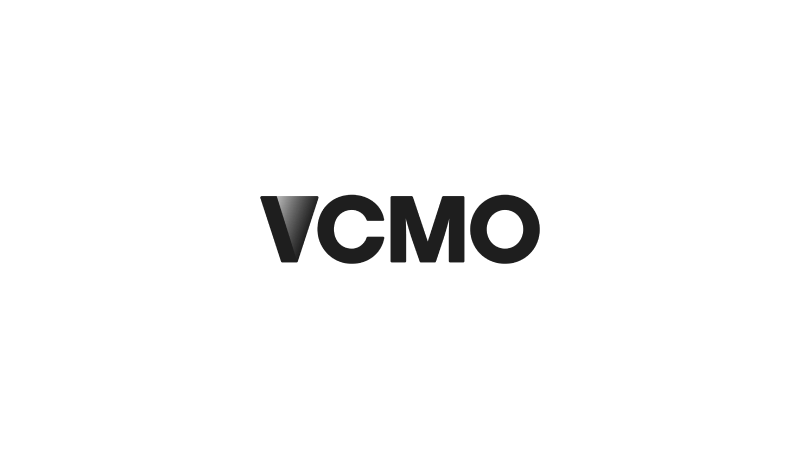
The Decline — and Rebirth — of the CMO: Why Marketers Need to Regain Boardroom Influence
The crisis and rebirth of the CMO role: restoring credibility through growth and enterprise value.
Introduction: The Crisis—and Opportunity—of Marketing Leadership
Across many boards, the Chief Marketing Officer (CMO) is being re-examined. Tenure remains short by C-suite standards—Spencer Stuart reports an average of 4.2 years for Fortune 500 CMOs in 2023 (now 4.3 years in 2024), still trailing the broader C-suite average Spencer Stuart+2Marketing Brew+2. CEO confidence has historically been patchy: Boathouse’s longitudinal study previously found only 34% of CEOs had “great confidence” in their CMO, with concerns centred on fluency in the language of the business and proof of impact—though more recent waves show some improvement from a low base Boathouse+1. Meanwhile, new titles—Chief Revenue Officer, Chief Growth Officer, Chief Brand Officer—are proliferating, often absorbing growth or revenue mandates once associated with marketing leadership (for example, CRO appointments up 17% year-on-year in 2024) Adweek.
This shift is not merely semantic. The digital era expanded marketing’s scope—data, martech, personalisation, experimentation—whilst simultaneously pulling CMOs deeper into executional complexity. In many firms, the role drifted from strategy, pricing, proposition and place (the full 4Ps) towards a narrower emphasis on communications and channels (the promotional element of the 4Ps). The result: influence at the top table has eroded, even as overall marketing spend and complexity have grown. Recent analyses argue the answer is not to diminish the CMO, but to re-centre the role alongside the CEO and CFO around customer-led growth, unit economics and enterprise value—when that alignment happens, CMO impact and credibility recover McKinsey & Company+1.
This article takes a forensic look at how the role has changed, why credibility slipped, and—critically—what great CMOs do differently to regain trust: speak finance fluently, anchor strategy in competitive advantage, select only the few tactics that move revenue and valuation, and operate as the CEO’s trusted growth architect.
Defining the Role of the CMO—Then and Now
The Chief Marketing Officer has historically been the executive custodian of growth. In its classic form, the role encompassed the entire marketing mix—product, price, place, and promotion—ensuring that strategy, proposition, and brand were tightly bound to the organisation’s commercial objectives. CMOs often came from sales or general management backgrounds and were seen as fluent in both customer and financial language. Their remit was not confined to communications; it spanned market entry, portfolio design, pricing architecture, and revenue growth strategy.
In the digital era, this definition has blurred. The rise of e-commerce, social media, martech, and data-driven marketing expanded marketing’s toolbox but also fractured its focus. Many CMOs have become stewards of the promotional “P” alone—campaigns, content, and channels—while product, pricing, or distribution migrated to other functions. This narrowing of remit has meant that while budgets have grown, the CMO’s strategic influence has shrunk.
The gap is stark: in global surveys of CEOs, the CMO is frequently ranked as the least understood member of the C-suite. Too often the role is equated with promotion and brand storytelling rather than enterprise growth. That disconnect fuels the rise of new titles—Chief Growth Officer, Chief Revenue Officer—that reassign revenue accountability to executives with a closer perceived link to sales or P&L.
Yet the original intent of the CMO remains critical: to be the voice of the market in the boardroom, linking customer insight to financial outcomes, and shaping the growth agenda. Businesses that still empower their CMO to operate at this level consistently report stronger returns from marketing investments and clearer alignment between marketing activity and enterprise value.
“When CMOs restrict themselves to brand and promotion, they risk becoming peripheral. When they anchor marketing to pricing, product, and revenue, they reclaim their seat at the strategy table.”
How the Role Has Changed in the Digital Era
The dawn of the digital era fundamentally redefined the landscape in which CMOs operate. Once measured on their ability to shape markets, steer product portfolios, and drive long-term brand equity, today’s CMOs are frequently judged on short-term campaign performance, digital metrics, and martech adoption.
Several key forces accelerated this shift:
- Proliferation of Marketing Channels - The explosion of digital platforms—from social media to programmatic advertising—multiplied the touchpoints through which brands engage customers. CMOs have had to oversee sprawling ecosystems of agencies, vendors, and platforms, often diverting focus from long-term strategic planning to tactical channel management.
- Data-Driven Accountability - The rise of real-time analytics, attribution modelling, and marketing dashboards has created both opportunity and pressure. While these tools enable sharper targeting and optimisation, they have also fuelled a quarter-by-quarter obsession with marketing ROI, narrowing horizons from strategic brand growth to immediate performance marketing.
- Martech & Complexity - Over 11,000 martech tools now compete for attention globally. CMOs are expected to master automation, AI, CRM, personalisation engines, and analytics suites. Instead of elevating marketing to the board’s growth engine, many find themselves bogged down in technology procurement and implementation.
- Shifting Board Expectations - CEOs and boards, under pressure from investors, increasingly prioritise revenue accountability. Where CMOs once influenced the entire value chain, boards now look to roles like Chief Revenue Officer (CRO) or Chief Growth Officer (CGO) to take direct responsibility for revenue outcomes. This reallocation of accountability reflects declining confidence that marketing leaders can fully connect strategy to sales.
- Talent & Skills Gaps - Modern CMOs must be polymaths—part technologist, part strategist, part brand steward, part customer champion. Few individuals can credibly span all domains. The result is a role often stretched too thin, where influence is diluted rather than consolidated.
The result is a paradox: marketing has never had more tools to demonstrate impact, yet the CMO has never been less influential in the boardroom. Instead of being recognised as growth architects, many CMOs are pigeonholed as “communications experts,” limiting their authority and tenure.
“The irony of the digital age is that CMOs have more data and tools than ever before, yet their ability to influence the growth agenda has diminished.”
Why the Role Is Losing Credibility in the Boardroom
The CMO once occupied a central seat at the executive table, translating customer insights into growth strategies and shaping investment priorities alongside the CEO and CFO. Yet today, the role is frequently viewed with scepticism. Research shows that the CMO now has the shortest tenure of any C-suite role, often lasting less than four years. This erosion of influence is driven by several interlinked factors:
1. Overemphasis on Promotion over the 4Ps
Too many CMOs have narrowed their remit to communications, advertising, and digital campaigns, neglecting critical levers such as pricing, product strategy, and distribution. This reduced scope reinforces the perception that marketing is tactical, not strategic.
2. Misalignment with Commercial Priorities
Boards and CEOs expect CMOs to speak the language of revenue, EBITDA, and enterprise value. When marketing is presented in terms of “reach” and “engagement” rather than commercial contribution, credibility is lost.
3. The Rise of Alternative Titles
The creation of roles like Chief Growth Officer (CGO) and Chief Revenue Officer (CRO) reflects board-level frustration. These positions—often filled by executives from sales or finance backgrounds—are perceived to bring stronger commercial acumen, even if they lack depth in marketing. In many cases, they displace the CMO entirely.
4. Short-Termism and Tactical Fixation
Under pressure to prove immediate ROI, CMOs often focus on campaign metrics rather than enterprise growth. This short-term lens risks making marketing appear as a cost centre rather than a driver of long-term value.
5. Perceived Skills Gaps
In an era when boards demand fluency in financial modelling, digital transformation, and customer analytics, many CMOs struggle to demonstrate credibility beyond brand and communications. This skills gap reinforces doubts about whether marketing leaders can operate as true commercial strategists.
The net effect is that the CMO’s voice is increasingly drowned out by those of the CFO, COO, or CRO. Marketing is often viewed as executional rather than strategic, leaving CMOs fighting to justify their role. Unless CMOs reclaim their authority by bridging strategy, finance, and customer, the downward trend in tenure and influence is likely to continue.
“Boards no longer tolerate marketing leaders who cannot connect activity to EBITDA. The CMO has to prove they are a commercial strategist first, a brand steward second.”
Mis-Steps of Weak Leadership
The decline in CMO influence cannot be attributed solely to external pressures. In many cases, marketing leaders themselves have contributed to their diminished authority by making avoidable mis-steps. These errors, repeated across organisations and industries, have undermined trust at the board level and weakened the role’s standing.
- Failure to Speak the Language of Finance - Many CMOs still report marketing success in terms of “brand awareness” or “social engagement” without connecting these measures to revenue or margin growth. This lack of commercial fluency creates a credibility gap with CFOs and investors who prioritise financial outcomes.
- Over-Reliance on Vanity Metrics - While reach, impressions, or clicks may show activity, they rarely demonstrate value. By prioritising surface-level metrics over meaningful KPIs such as CAC (Customer Acquisition Cost), LTV (Lifetime Value), or pipeline contribution, weak CMOs reinforce the stereotype that marketing lacks rigour.
- Shiny Object Syndrome - The allure of emerging platforms and technologies often distracts CMOs from the fundamentals. While innovation is essential, chasing every new digital trend without tying it back to strategy or revenue outcomes can make marketing seem frivolous and unfocused.
- Inward-Looking Focus - Some CMOs concentrate too heavily on creative outputs or internal team processes while neglecting the external commercial realities: customer needs, competitor activity, and investor expectations. This insularity can erode the CMO’s perceived relevance.
- Avoidance of Accountability - When marketing performance falters, weak CMOs may shift blame to external agencies, budgets, or macroeconomic conditions rather than accepting responsibility. This reluctance to own results erodes trust and undermines the role’s authority within the C-suite.
- Limited Collaboration Across the C-Suite - The most effective CMOs act as bridges between functions—aligning with sales, finance, operations, and product. Weak leaders, by contrast, operate in silos, reinforcing the perception that marketing is disconnected from the rest of the business.
In an environment where CEOs and boards are demanding hard evidence of marketing’s contribution, these mis-steps magnify doubts about the CMO’s ability to operate as a genuine business partner. Correcting them requires a shift in mindset—from being a guardian of brand and promotion to being a driver of enterprise value.
“Weak CMOs lose credibility not because marketing isn’t important, but because they fail to translate its impact into the language of growth, profit, and enterprise value.”
How the CMO Can Win Back Trust
The path to restoring the CMO’s influence is neither quick nor easy, but it is entirely possible. For marketing leaders willing to reframe their role, embrace commercial rigour, and position themselves as strategic partners, the opportunity to reclaim credibility is real.
1. Anchor Marketing to Business Strategy
CMOs must demonstrate that marketing is not a siloed function but a growth driver integrated into the organisation’s broader objectives. This means aligning campaigns, budgets, and priorities directly with corporate strategy, whether that is market expansion, margin improvement, or investor readiness.
2. Build a Shared Language with the CFO
Fluency in financial metrics is no longer optional. CMOs who can model CAC, LTV, margin impact, and revenue contribution position themselves as peers to the CFO rather than cost-centre managers. By proving marketing’s impact in financial terms, they shift the conversation from spend to investment.
3. Partner Strategically with the CEO
CEOs are increasingly looking for allies who can balance short-term revenue pressures with long-term enterprise value creation. CMOs who position themselves as co-architects of strategy—rather than as executors of promotion—regain a seat at the decision-making table.
4. Focus Relentlessly on Competitive Advantage
Effective CMOs identify and amplify the drivers of differentiation in their business, while simultaneously addressing weaknesses that limit growth. By framing marketing decisions in terms of competitive positioning, they bring rigour and focus to the boardroom.
5. Prioritise Impactful Execution Over Activity
The modern CMO must resist being dragged into the noise of tactical delivery. Instead, they should select and champion only those initiatives that demonstrably move the revenue and margin needle, ensuring execution remains tightly linked to strategy.
6. Rebuild the Narrative of Marketing’s Value
Finally, CMOs must reshape how their function is perceived. By consistently reporting marketing’s role in enterprise growth—customer acquisition, retention, market share, and valuation—they reinforce their importance not just as marketers, but as business leaders.
“The CMO’s influence isn’t lost—it’s waiting to be reclaimed by those who align marketing with growth, speak in financial terms, and act as true strategic partners.”
Conclusion: Reclaiming the CMO’s Strategic Seat
The decline in the CMO’s influence is not inevitable—it is a symptom of how the role has been allowed to drift. Over the past two decades, as marketing became more complex and digital channels multiplied, many CMOs were pulled into tactical execution at the expense of strategic leadership. The result has been shorter tenures, weaker credibility in the boardroom, and the emergence of new job titles intended to fill the void.
Yet the solution is not to sideline the CMO, but to redefine the role. Businesses today face an environment shaped by economic volatility, technological disruption, and shifting customer expectations. These challenges demand leaders who can bridge market insight with financial discipline, connect short-term execution to long-term strategy, and guide organisations towards sustainable competitive advantage. That is precisely the opportunity for the modern CMO.
By aligning marketing with enterprise goals, partnering with CFOs and CEOs as peers, and focusing relentlessly on initiatives that drive growth, CMOs can reposition themselves at the heart of business strategy. Success will not come from chasing every trend or inflating activity metrics, but from restoring confidence in marketing’s ability to generate value where it matters most—revenue, profitability, and market position.
The CMO of the future will be defined less by creative campaigns and more by strategic judgement, financial fluency, and the ability to lead change. For those willing to embrace this transformation, the role remains one of the most powerful levers of business performance. The boardroom may have grown sceptical, but the path to renewed trust and influence is clear—and it begins with the CMO stepping up as the strategist, partner, and growth leader their organisation truly needs.
Data Sources Used:
1 CMO Tenure Study: An Expanded View of CMO Tenure and Backgrounds - Spencer Stuart (Published May 2023)
2 CMO Study 2021 - Boathouse Thinking (Published August 2021) NB This is gated content requiring contact details for the study.
About VCMO
VCMO is a UK-based provider of fractional marketing services, supporting B2B SMEs—ranging from funded scale-ups to mid-tier and private equity-backed businesses—through key moments of growth and transformation. Its Chartered Fractional CMOs and SOSTAC® certified planners embed strategic marketing leadership into organisations navigating product launches, new market entry, acquisitions, and leadership gaps.
What’s a Rich Text element?
The rich text element allows you to create and format headings, paragraphs, blockquotes, images, and video all in one place instead of having to add and format them individually. Just double-click and easily create content.
- By following these tips, you can make sure you’re noticed on LinkedIn and start building the professional connections you need to further your career.
-

Static and dynamic content editing
A rich text element can be used with static or dynamic content. For static content, just drop it into any page and begin editing. For dynamic content, add a rich text field to any collection and then connect a rich text element to that field in the settings panel. Voila!
How to customize formatting for each rich text
Headings, paragraphs, blockquotes, figures, images, and figure captions can all be styled after a class is added to the rich text element using the "When inside of" nested selector system.


Ready to take your marketing to the next level? Let us help you get there.
Subscribe to Our Newsletter
Fractional Edge is our montly newsletter sharing expert opinion on the latest trends in fractional leadership, curated marketing content from leading sources, VCMO events, and much more. Subscribing is quick — just add your name and email.










.jpg)





